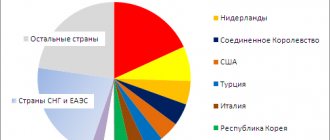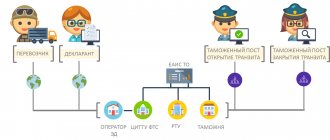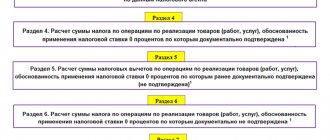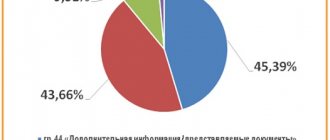The Commodity Nomenclature of Foreign Economic Activity of the EAEU is a large classifier of goods. The commodity nomenclature of foreign economic activity of the Eurasian Economic Union is used in their work by customs officials and companies that are engaged in foreign economic activity.
Using HS codes, process participants identify the product and perform customs operations. Simply put, thanks to the code, both customs and companies quickly understand what the amount of duty and excise tax will be, and find out whether the product requires permits. In addition, according to the Commodity Nomenclature of Foreign Economic Activity, customs monitors foreign trade statistics.
For customs authorities, the ten-digit code simplifies the processing of declarations. But for companies without special knowledge, correctly assigning a HS code is an extremely difficult task.
HS code: what do these numbers mean?
According to Article 52 of the Customs Code of the Customs Union, a code is assigned to each foreign product. The code consists of 10 digits, which are used for customs clearance.
Each character in the code is important: the numbers reflect the various properties of the imported product, product or product.
Structure of the HS code
The structure of the foreign economic activity product nomenclature code looks like this:
- group;
- position;
- subheading;
- subheading.
The first two digits of the code indicate the product group . It is determined depending on the material from which the product is made, the degree of processing or the application.
The first four digits in the foreign economic activity product nomenclature code reveal the product position . She elaborates a little on the information in the first paragraph.
Subposition – the first six digits of the TN code. From this point you can get even more information about the product. For example, how it works or acts.
A full ten-digit TN code is obtained after adding four more digits. The last paragraph, subheading , reports the technical characteristics of the product.
Examples of import customs declarations
- electronic household scales for weighing industrial goods, battery powered, maximum weighing weight 500 grams, sensitivity 0.1 grams,
- weighing equipment household scales: household steelyard 12kg
- household electronic scales marked `delimano kitchen scale beta`, model ek4150, art. 100089848 - 72 pcs., complete with battery, max.
- household scales, for weighing products, not electronic, sensitivity 453.59 grams:
- household scales for weighing people: electronic (battery-powered, sensitivity +/-100g, maximum weighing weight 150-180kg) mod.: is - 560
- household scales:
- household mechanical decorative scales made of brass (sensitivity 1 g) (maximum weighing weight 2.5 kg).
- household scales:
- household scales powered by batteries:
- household electronic scales, tabletop, battery-powered, not for weighing people, sensitivity 5 g, maximum weighing weight 30 kg.
Correct HS code: why is it important
The correct HS code is one of the conditions for the goods to quickly undergo customs clearance and avoid additional checks.
If the numbers turn out to be incorrect and the product is classified in a different category, problems may arise. For example, because payments for this category will be lower, which means the company will pay less. When this information is revealed, customs will change the HS code and demand that the difference in payments be closed. They will also initiate a case of an administrative offense, for which I can impose a fine.
It is also possible that payments for an incorrect code will be higher than those that had to be paid using the correct one. Then customs will either leave the payment in force or recalculate it in favor of the company. In this case, an administrative case will not be initiated, that is, the company can only lose financially. But such situations occur extremely rarely.
To correctly determine the HS code, companies contact the declarant. This could be a customs officer within the company or a representative of a customs broker.
Products that need to be labeled
The labeling of light industry goods is regulated by Government Decree No. 1956 of December 31, 2021. The codes in the resolution are listed in two classifiers. If your product falls into one of the categories, then it needs to be labeled.
| OKPD 2 | Commodity Nomenclature of Foreign Economic Activity |
| 14.11.10 — clothing made of genuine or composite leather; 14.14.13 - blouses, shirts and body shirts, knitted or knitted for women or girls; 14.13.21 - coats, raincoats, jackets, raincoats, raincoats with hoods, anoraks, windbreakers, windbreakers and similar textile products for men or boys, except knitted or knitted; 13.92.12 - bed sheets; 13.92.13 — table linen; 13.92.14 - Toilet and kitchen linen. | 6201 - coats, short coats and blousons, knitted by machine or hand knitting, for women or girls, windbreakers and similar products for men or boys; 6202 - coats, short coats, capes, raincoats, jackets (including ski jackets), windbreakers, windbreakers and similar products for women or girls; 6303 — bed linen, table linen, toilet and kitchen linen; 6106 — blouses, blouses and blouses, knitted by machine or hand knitting, for women or girls; 4203 10 000 - items of clothing and clothing accessories made of genuine leather or composition leather. |
If you are in doubt which category a product belongs to, refer to the EAEU Commodity Nomenclature for Foreign Economic Activity and (or) OKPD2, which are indicated in the documents confirming the conformity of the product ( declaration of conformity, certificate of conformity ).
How to determine the TN code: three ways
To make it easier to assign a code to a product, you need to find a database of TN codes. The list is in the decision of the Council of the Eurasian Economic Commission (dated July 16, 2012 No. 54).
All codes are combined into 97 product groups. Each of them has positions, sub-items and sub-sub-items. Assigning the required code is not so easy. There are three options on how to do this.
On one's own
This is the most difficult and time-consuming way to obtain numerical information about a product. But it's free.
Start with documents. The following will help you understand the TN code:
- decision of the Council of the Eurasian Economic Commission dated July 16, 2012 No. 54;
- Order of the Federal Customs Service dated August 15, 2014 No. 233-r;
- basic rules for interpreting the commodity nomenclature of foreign trade activities (there are six such rules);
- explanations to the commodity nomenclature of foreign trade activities of the EAEU;
- documents on decisions already taken on the identification of goods;
- information from preliminary decisions on the identification of goods.
Describe the imported goods in full – its design, purpose and composition. Start with the general qualities of the product, end with specific, specific properties.
Use special services. There are websites where you can select the HS code for free. For example, TKS.RU. To use the search, just enter a keyword and select one of the options offered.
The disadvantage of free selection is that the code base is not always updated in a timely manner. Therefore, professionals prefer to use paid databases, such as VED Info. Similar services are provided by:
- up-to-date information on HS codes,
- complete information on the method of registration of a particular type of product,
- list of documents that may be needed during registration.
But despite the advantages, even paid programs do not guarantee that the code will be selected correctly. This process requires practical experience.
Through a customs broker
The fastest way to determine the foreign economic activity product nomenclature code. Usually the broker will tell you the code within 1-2 hours. But it’s easier to completely entrust customs clearance to professionals. They will determine the code, fill out the declaration, and prepare all the necessary documents.
Through the customs authority
An application for a preliminary classification decision can be submitted electronically. There is a necessary form on the State Services website. True, you will have to wait up to 90 days and, in addition, you will need to pay a fee of 5 thousand rubles.
It is up to the entrepreneur to decide which of the proposed methods to use. The main thing is to determine the HS code correctly and promptly.
Step-by-step examples of duty calculation
Ad valorem duty - calculated from the customs value of the goods
Product: robot toy for children. HS code: 9503004900 - “toys depicting animals and other creatures.” In fact, the product looks like electronics, but it does not have input devices - buttons, keyboards. The item is intended for teaching children, so it can be designed as a “toy”. Rate according to the HS code: 10% Customs value: $150,000 cost of goods according to the invoice + $2100 shipping of cargo by sea from China + $100 cargo insurance = $152,100. Duty : $152,100 * 10% = $15,210
Specific duty - calculated from the units of cargo measurement
Product: textile carpets. HS code: 5705008000 - “carpets made of other textile materials”. To select a code, it is important to clarify the material - for carpets made of wool, a different HS code is used. Rate according to the HS code: 0.38 euros per square meter Total footage of carpets: 100 pieces of 10 square meters each, a total of 1000 square meters. Duty: 1000 square meters * 0.38 euros = 2600 euros
Combined payment - choose a higher fee
Product: black tea. HS code: 0902300001 - “black tea in packaging”. This code implies restrictions on the weight of one package up to 3 kg and a combined customs duty - we choose the one that is larger. Rate according to the HS code: 12.5%, but not less than 0.5 euros per kg. Customs value: 10,000 kg at $2 per kg + $1,650 for delivery of cargo by sea from Sri Lanka Ad valorem duty: $21,650 * 12.5% = $2,707 Specific duty: 10,000 kg * 0.5 euro = 5,000 euro Total fee: 5000 euros
Examples of product names for obtaining TR CU declarations and certificates
- Electronic household scales, trademarks “Topperr”, “Zumman”
- Electric scales powered from the mains (floor and tabletop),
- Electronic household scales: floor scales, kitchen scales, multifunctional scales
- Electronic household scales: kitchen scales, floor scales
- Floor scales of the Zelmer brand
- Electronic floor scales marked “AVON”. Directive No. 2004/108/EC.
- Household electronic scales
- Household scales model Index Smart Scale
- Household electronic scales,
- Electronic scales: commercial table scales, general and special purpose table scales, floor scales, household scales, steelyards,
- Household electronic scales powered by chemical current sources,
- Household electronic scales:
- Household floor scales, kitchen scales, luggage scales (battery powered)
- Household table scales,
- Household electronic kitchen scales
- Household kitchen scales
- household electronic scales, marked “NINGBO TOTAL & ALL INTERNATIONAL TRADE CO.,LTD”
- Household scales: electronic scales, kitchen scales
- Electronic household scales: kitchen scales
- Household electronic kitchen scales powered by chemical current sources,
- Digital kitchen scales
- Household electronic kitchen scales (battery powered) of the “POLARIS” brand
- Kitchen scales of the Zelmer brand
- Electronic kitchen scales
- Kitchen scales, t.m. TESCOMA
- Kitchen scales with Bluetooth function,
- Household electrical appliances: electronic kitchen scales,
- Electronic kitchen scales VKE-21 in the amount of 2004 pcs., Electronic kitchen scales VKE-22 in the amount of 2004 pcs.,
- Electronic household kitchen scales; electronic household floor scales, including those with a training device function of the SCARLETT trademark
- Electronic scales (kitchen, floor), brands: “ENERGY”, “HOMESTAR”.
- Electronic scales: electronic floor scales, electronic kitchen scales
- Electronic kitchen scales VKE-21 2004 pieces, Electronic kitchen scales VKE-22 2004 pieces, Electronic floor scales VNE-31 2940 pieces and Electronic floor scales VNE-32 2940 pieces
- Electronic kitchen scales, brand “HOMESTAR”, models: HS-3001, HS-3002;
- Household electronic fishing scales,
- Electronic scales powered by a chemical current source, t.m. "VITESSE"
- Electronic scales powered by a chemical current source, t.m. "CALVE"
- Electronic household kitchen scales, brand "CASO", model: F10, B5, I10, Q5, X3, K3, C5, L15, Kitchen Energy; brand "Ellrona", model 63210;
- Electronic scales, powered by a chemical current source, i.e. "VIGOR", mod. hx-8200, hx-8201, hx-8202, hx-8203, hx-8204, hx-8205, hx-8206, hx-8207, hx-8208, hx-8209, hx-8210, hx-8211, hx- 8212, hx-8213, hx-8214, hx-8215
- Household weighing instruments powered by 3 volt batteries: steelyards
- Battery operated scales
- Electronic scales powered by batteries
- Electronic scales for household use: electronic floor scales, marked: DELTA articles: D-9240 954 pieces), D-9217 (1800 pieces), D-9218 (1800 pieces), D-9219 (1800 pieces), D-9222 ( 1800 pieces), D-9237 (3000 pieces), Scales,
- Electronic floor scales, models: models: D-9219, D-9222, D-9223, D-9226, BA-4003, electronic kitchen scales, models: BA-001, BA-006, BA-005, KCE-32
- Electronic household scales, articles 03B, 13K, 15K, 13C, SF-400, K1-2, 247-387, 247-388, 247-389, 247-390, 247-391, 247-392
- Electronic luggage scales with LED screen,
- Household electronic kitchen scales (powered by batteries, including solar panels)
- Electronic scales - canter for measuring containers, packages on weight with a built-in tape measure, model: AWS H-110
- Electronic scales powered by a chemical current source
- Mains powered electronic scales marked Soehnle, model 5kg, 10kg, 20kg, 30kg
- “ARESA” brand scales (powered by batteries up to 7 V): kitchen scales









